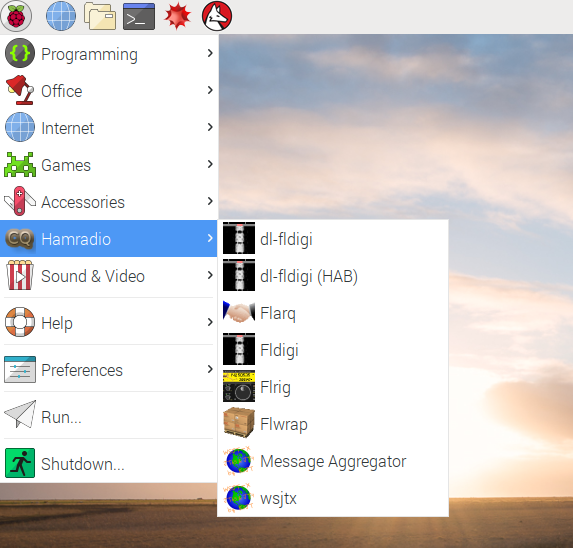

I’ve done some APRS on 10m using Direwolf and Xastir -ĭirewolf hasn’t yet gone through FLRig, but I think that’s a me problem. It works perfectly, but I’ve not yet got together a collection of pictures to send to other people! APRS QSSTV has so far been used to receive video on 20m - 14.230MHz. It allows for a range of keyboard-keyboard data modes - RTTY and PSK31/63 are the most common, but I’ve used it for Feld Hell in the past, which is pretty cool!
#Fldigi on chromebook software
FLDigiįLDigi is a piece of software that’s been in my toolbox for years. I have FLRig set up as my “Radio” in JS8Call, and that manages control of the radio for me. I’ve seen people do HF Mobile APRS on 40m with this, it’s a really cool suite. JS8Call Utilities extends the tool to better support GPS to APRS, or I think winlink email. It’s also been extended to allow for 1-many and many-1 messages and signal reports, and there are now interconnects with APRS for grid reports and messages. This allows for a more personal, interesting contact. JS8Call takes the ideas and strengths of the FT-8 mode and extends them into a mode of communication that allows more for keyboard-keybaord communication. The Debian team does now ship snapshots of Hamlib to step around this problem. It means I get some error messages on Debian sometimes - this is something to watch out for when debugging issues. The developer ships it with the latest snapshot of Hamlib, which is now quite far ahead the most recent release (3.3 at time of writing), and they are actively developing to the HEAD. I have packaged WSJT-X for Debian in the past - it can be a little finnicky to use. I have FLRig set up as my “Radio” in WSJT-X, and that manages control of the radio for me. It also gives maps like this on PSKReporter:Īudio has been a huge frustration here - Pulseaudio and this program are friends, but only under some circumstances, and debugging can waste an hour of time trying different configurations to get it working. QSOs are simple - you exchange callsigns & gridsquares, signal reports in dB (I assume dB relative to carrier or normalised audio) and you move on. I’ve been using WSJT-X to do FT-8 and FT-4 communication.įT-8 is nice, it gives short bursts of data, allows for QSOs over really long distances in unfavourable conditions and has been quite fun to use.

It uses Hamlib under the surface to handle communication with the radio, and presents all the knobs, whistles and options I could want to fiddle with the radio.įLRig is helpful as everything else can interface with it - it’s in hamlib as a radio, I believe. I use FLRig as a single point of control for all other applications. It spits out plenty of errors in to dmesg but it’s mostly stable enough. On Debian, the radio enumerates as 2 devices - /dev/ttyUSB0, for control and /dev/ttyUSB1 which is… useless as far as I can see.īoth are SILabs CP210x I think.
#Fldigi on chromebook install
We have convenient metapackages to install everything quickly here - you can apt install these on Ubuntu and Raspberry Pi OS too, but they are a little behind what’s on offer in Debian.Īll of the applications I use below are packaged for Debian and can be installed with apt, which is really cool! Rig ControlĬontrol of the Yaesu FT-891 is achieved using CAT over the inbuilt USB Serial port.

I am, true to form, running Debian Testing - I take an active part in working on the Debian Hamradio packages, so dogfooding it a good thing to do. It’s currently held together with electrical tape and hope. I’m using an Acer Chromebook R11 converted to run Linux with a coreboot UEFI.įor audio I have a cheap USB audio interface from Ebay that’s been through the wars. This laptop was first set up and somewhat extensively tested at home, and then used in the field to prove it worked. You should join us and take part - just make 4 posts in June!Īs part of the general move to do more radio / do radio in a field, I’ve been doing radio in a field instead of preparing for it. This post is part of ’s blog more in June challenge.


 0 kommentar(er)
0 kommentar(er)
